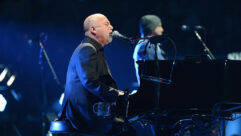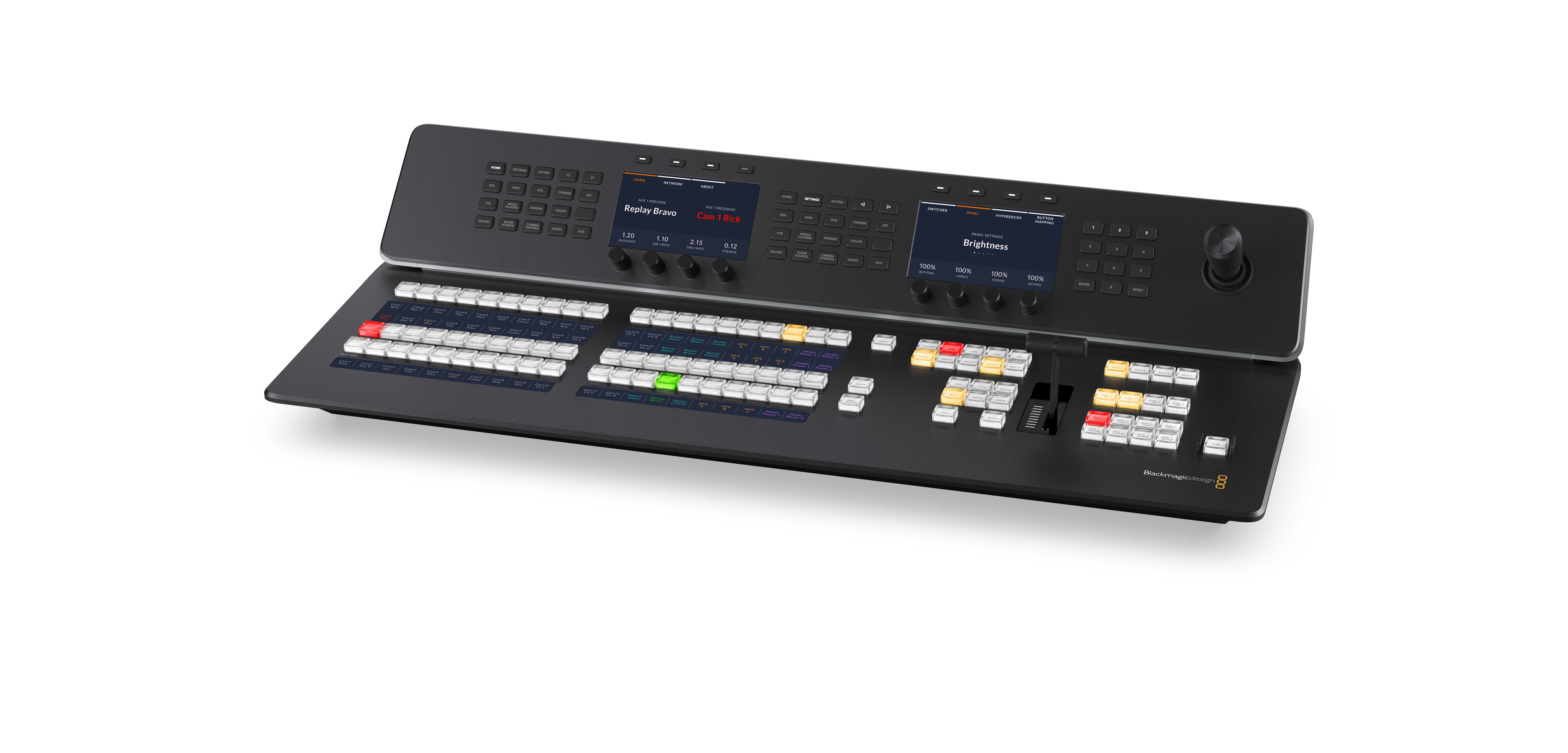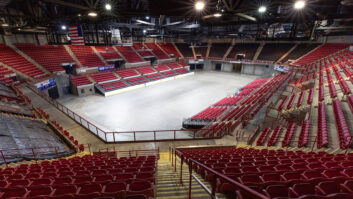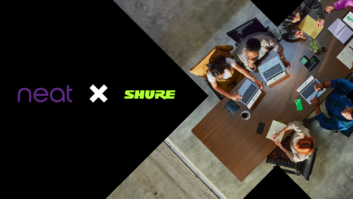
An AV System to Train Firemen, Part 1
Jun 12, 2012 10:44 AM,
With Bennett Liles
Listen to the Podcasts
Editor’s note: For your convenience, this transcription of the podcast includes timestamps. If you are listening to the podcast and reading its accompanying transcription, you can use the timestamps to jump to any part of the audio podcast by simply dragging the slider on the podcast to the time indicated in the transcription.

Outfitting a fire station with a state of the art AV system involves some special considerations and a few handy tricks. Andrew Van Veld and Circle City Audio installed a system for training that’s easy for firemen to run, and they did it all while the station was fully online and operational. That’s coming right up on the SVC Podcast.
Andrew Van Veld, it’s nice having you on the SVC Podcast from Indianapolis and with Circle City Audio and tell us a little bit about Circle City Audio.
Business started in 1995 it was one of those good stories about how a hobby turned into work. We do all sorts of projects; about three quarters of our work is HOW whether it’s new construction or retro. We also do a different school or other government type of things as well as commercial projects. There are five of us that can do various aspects of the field work, a little bit of office help. We do sound, video, both projection and camera systems, lighting, all of the AV trades. [Timestamp: 1:27]
OK, well, that’s enough to keep five people real busy for sure. This is an especially interesting one because I don’t think we’ve ever covered an AV installation in a fire station. At first thought you might say, “Well what kind of AV stuff do they need other than paging speakers or a big bell,” or something but like everything else, it’s not that simple anymore. For one thing, they do a lot of training there, so was there anything especially challenging about outfitting a fire station with an AV project?
There were really two focuses on this project, one would be true with any fire station some of the problems they had were the firemen—because this is a facility where the firemen live when they’re on their 24 hour shifts so when they’re working in the engine bay or exercising or doing whatever they’re doing in the facility they like to have music or maybe watch a movie so the tendency is to bring boom boxes in and then when there’s a call that comes in on the radio system they can’t always hear the call. It’s not that all the kittens are stuck in the tree still but the call isn’t clear and they’ve got issues and they’re just using their walky talkies so one of the tasks was to outfit the building with a system that would basically pause or duck when there was an alarm call. The other thing on this facility was they were making a training center for classroom training so not the outdoor kind of fold your hoses and climb the ladder training but best practices and all those kind of things and for all of the staff in the territory so they were trying to make it not only work in the classroom with the normal kind of things with a computer and Power Point and a projector but also the ability to record the trainings for future use as well as stream them to the other two fire stations so staff that are on duty in other stations could also observe the training but still be local to where they needed to be in case there was an alarm run. [Timestamp: 3:26]
Yeah I guess when you first think about training firemen you picture them out there stacking hoses and burning down abandoned houses for practice and they certainly do that but there’s also a much more modern aspect to the training. They’ve got sound, video and graphics and you used some Xantech gear to do that, so what all is controlled by the Xantech touchpanel and Web Intelligent Controller? I think that’s what you used.
In the training room is where the touchpanel is located. It’s right by the podium so the trainer or presenter can run the system, which is switch what computer is being used or there’s a document camera and things like that so all of the basic functionality for training is managed at the touch panel as well as all of the audio throughout the building with a couple of minor exceptions, two of the rooms are outfitted with surround sound theater systems that were done from a consumer prospective so those systems we’re not fully commanding and integrating but we are muting them when there’s a call so we did have a little bit of control going out there. The televisions in those rooms are also controlled so we can put the training in those rooms as well as on the streaming system. So all of the functionality or all of the AV gear is done with a combination let’s say of the touch panel and the WIC, Web Intelligent Controller. The reason why there are both of those, it’s kind of two-fold, with the Xantech line certain things work easier out of the touch panel, for example infrared control is smoother and simpler especially when you have a remote device that you don’t have the IR codes for and you have to use the learning remote that’s very easy with the touch panel. The WIC, the web piece, does really well with managing the Ethernet devices so we have these little IPRS232 gadgets which is another Xantech piece, there are ten of those in the system. They’re running the televisions, they’re running the bi amp Nexia which is the audio DSP, as well as a Kramer video switcher. So those things are managed over Ethernet and a WIC is the right device for that as well as we’ve made a simple website so if it’s a guest trainer, for example, who isn’t familiar with how to run this system the fire department’s trainer can sit in the back of the room with a computer or an iPad or a Smartphone and control the system over the network without having to get up to the touch panel. [Timestamp: 5:58]
1
An AV System to Train Firemen, Part 1
Jun 12, 2012 10:44 AM,
With Bennett Liles
And make the presenter look brilliant.
Well as good as they can look, yes sir. [Timestamp: 6:02]
OK, you have serial ports, relays, hard wired IR inputs, Ethernet ports, one with power over Ethernet. Obviously, the AV control business is a very competitive field so why did you decide to go with the Xantech gear?
We’ve appreciated how simple, I guess or maybe straight forward is a better word, that it is to program as well modify your programming on a Xantech system. We’re dealers for and have used other products but the ability to make a quick change and put things in that aren’t already in the library are pretty smooth. There are some trade off’s I think there are some things that could be more robust but all in all it was a smooth flexible system and we were able to assemble a pretty creative kit from regular off the shelf Xantech components. [Timestamp: 6:52]
And you’ve got a whole bunch of video monitors in there for the training sessions. Those can be serial or infrared controlled but IR control on monitors can have some drawbacks.
With infrared you can run into cable length issues and what command did I really press at the time so we used the Ethernet devices to be able to put direct commands into the panels and it’s solid it doesn’t burp at all. [Timestamp: 7:21]
Yeah, one of those big problems I’ve seen with trying to do infrared on monitors is somebody can use a remote to turn on the monitor and then you get out of sync using a generic flip flop power command and the monitor takes an ON command for OFF and it gets all reversed.
Well the other thing that we found is it can look un-elegant to have an IR bud stuck on the front of every device so by using the serial connection in the back it looks way more professional as well. [Timestamp: 7:47]
So you’ve got what, a total of seven audio zones that you have controlled there?
Yes, there are the afore mentioned in a home theater rooms that were 5.1 systems that are basically consumer level devices with big commercial televisions on them. There is a third system that’s on a home component AV receiver in the fitness room. Now these firemen have one of the fanciest fitness rooms in the western hemisphere and it has a big 52, I believe, inch or 55 inch monitor that is run from our system but they can also play Blu-ray in that room. We have four Bose DS 100 loudspeakers hooked into the amplifier so it can get way louder than the treadmills and any of the equipment but again, all that system when there’s an alarm that comes through TV mutes, DVD pauses, audio mutes until the alarm’s over and then it comes back up. [Timestamp: 8:41]
And what type of video signal are you circulating to those monitors? Is it all one format like HDMI or DVI?
Everything’s actually VGA over Cat-5. We use Kramer for that to send the video out. The other audio zones are the engine bay which also has four of the Bose DS100’s, a back patio which has a smaller DS 16 so when they’re cooking out they can also listen to music or whatever and then the training room itself which actually has some reasonable grade ceiling speakers that were put in as, by the electrical contractor oddly enough. One thing that we didn’t talk about in the challenges perspective is this building was built for a year before we got to do our work. There was a, some kind of problem with the concrete so the building sat empty for many months and nothing was put in, in terms of conduit for any of our work. So we had a pretty good struggle, it was a functioning fire station when we got around to putting our equipment in. [Timestamp: 9:36]
Yeah that would have been a lot easier if you had been able to get in on it from the ground up and had gotten in on the planning of the building. Now that can suddenly get to be a very busy place when an alarm comes in. How did you manage to handle the installation without getting in their way or did you have to actually stop working when they had an emergency come up?
From a cooperation perspective we made sure that we didn’t bring any of our equipment online until we had the ducking interface working so when did start playing music, when we did start providing video it was already working in conjunction with the function of the building. We had in addition of course ladders and cable racks and things everywhere we just made sure that we didn’t blockade any of the hallways. Thankfully the building’s laid out so there’s two ways to get everywhere so we did make kind of a box and cable explosion in the training room for a couple of weeks but that was not in anybody’s way. [Timestamp: 10:30]
Well, that would be a smart thing to do to make sure you have the ducking interface working first so you can deal with anything that comes up.
It was interesting on that note that from our perspective ducking is a pretty normal thing. You do that in a lot of systems that are have speech paging and that kind of stuff. In this environment it was amazing to them that we were able to do it so it was a fun blessing as it were to be able to provide them something that on a daily basis was going to be to their benefit that again all we had to do was put the right parts, run the right wire and do the right programming and it’s functional. [Timestamp: 11:06]
Well that’s some feat managing to amaze firemen with all the things they usually see going on. I really appreciate your telling us about it. Andrew Van Veld with Circle City Audio in Indianapolis and outfitting a fire station for AV. And in part two, we’ll get into the projector and the Sony camera that they use and how they record their training sessions and we’ll see you then.
2










